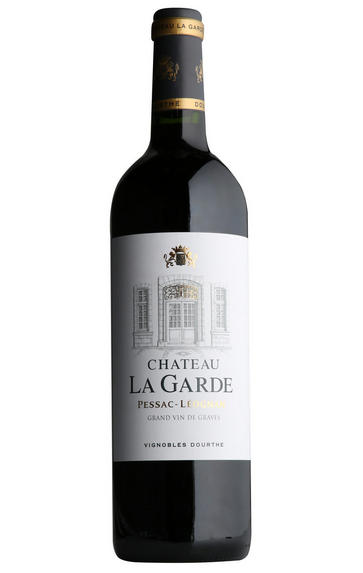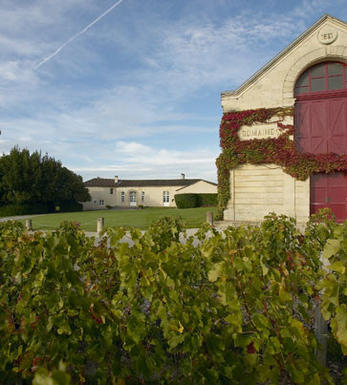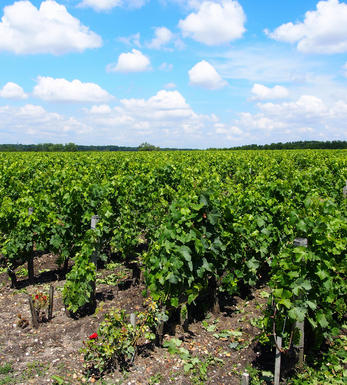
2016 Château la Garde, Pessac-Léognan, Bordeaux

Critics reviews
Neal Martin, vinous.com (January 2020)
Jane Anson, Decanter (May 2020)
Jancis Robinson - 24th April 2017
Jeb Dunnuck. jebdunnuck.com (February 2019)
About this WINE

Chateau la Garde
Château La Garde is a rising star of the Pessac-Léognan wine appellation owned by the dynamic Bordeaux negociant company Dourthe-Kressman. It is a medium-sized property with 47 hectares of vineyards in, planted with Cabernet Sauvignon, Merlot and Sauvignon Blanc.
The Cabernet-dominated red wines are soft, well structured and packed with smooth, ripe fruit which makes them very attractive young, though they also possess good medium-term cellaring potential. The red wines display the true Graves minerality underneath an exuberant cassis-and-plums aroma.
Albeit predominantly a red wine vineyard, it does have at its heart a small patch of land which is more suited to the production of white wine, from which a mere 1,000 cases of exquisitely-scented, vibrant white Bordeaux is produced each year.
What is unique to La Garde is the presence in the vineyard of a parcel of rare Sauvignon Gris, a close cousin of the Sauvignon Blanc but a varietal which yields a slightly richer, rounder character to the finished blend. 50% of the wine comes from this grape and the touch of complexity it imparts lifts this wine above most of its competitors.
The investment made by Dourthe in both vineyard and cellar is now beginning to bear fruit, both figuratively and literally, in the form of exceptional wines of both colours, and any re-assessment of the Pessac-Léognan classification would surely see La Garde feature amongst the Classified Growths.

Pessac-Leognan
In 1986 a new communal district was created within Graves, in Bordeaux, based on the districts of Pessac and Léognan, the first of which lies within the suburbs of the city. Essentially this came about through pressure from Pessac-Léognan vignerons, who wished to disassociate themselves from growers with predominately sandy soils further south in Graves.
Pessac-Léognan has the best soils of the region, very similar to those of the Médoc, although the depth of gravel is more variable, and contains all the classed growths of the region. Some of its great names, including Ch. Haut-Brion, even sit serenely and resolutely in Bordeaux's southern urban sprawl.
The climate is milder than to the north of the city and the harvest can occur up to two weeks earlier. This gives the best wines a heady, rich and almost savoury character, laced with notes of tobacco, spice and leather. Further south, the soil is sandier with more clay, and the wines are lighter, fruity and suitable for earlier drinking.
Recommended Châteaux: Ch. Haut-Brion, Ch. la Mission Haut-Brion, Ch. Pape Clément, Ch Haut-Bailly, Domaine de Chevalier, Ch. Larrivet-Haut-Brion, Ch. Carmes Haut-Brion, Ch. La Garde, Villa Bel-Air.

Cabernet Sauvignon Blend
Cabernet Sauvignon lends itself particularly well in blends with Merlot. This is actually the archetypal Bordeaux blend, though in different proportions in the sub-regions and sometimes topped up with Cabernet Franc, Malbec, and Petit Verdot.
In the Médoc and Graves the percentage of Cabernet Sauvignon in the blend can range from 95% (Mouton-Rothschild) to as low as 40%. It is particularly suited to the dry, warm, free- draining, gravel-rich soils and is responsible for the redolent cassis characteristics as well as the depth of colour, tannic structure and pronounced acidity of Médoc wines. However 100% Cabernet Sauvignon wines can be slightly hollow-tasting in the middle palate and Merlot with its generous, fleshy fruit flavours acts as a perfect foil by filling in this cavity.
In St-Emilion and Pomerol, the blends are Merlot dominated as Cabernet Sauvignon can struggle to ripen there - when it is included, it adds structure and body to the wine. Sassicaia is the most famous Bordeaux blend in Italy and has spawned many imitations, whereby the blend is now firmly established in the New World and particularly in California and Australia.


Buying options
Add to wishlist
Description
This has a dark maroon colour. The Merlot is grown on clay; the Cabernet on gravel. The nose offers generous fruit and liquorice. There is a savoury minerality on the mid-palate. It finishes long with a graphite edge.
Blend: Cabernet Sauvignon 50%, Merlot 47%, Petit Verdot 3%
wine at a glance
Delivery and quality guarantee